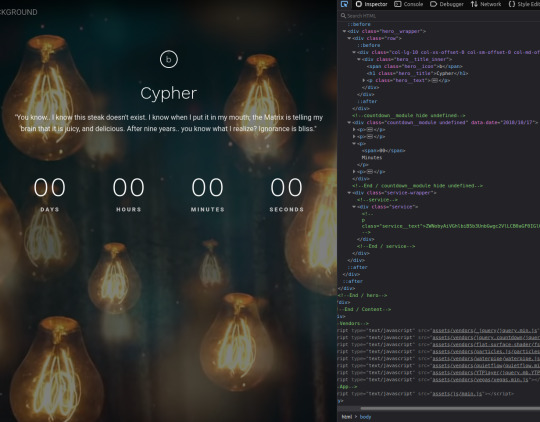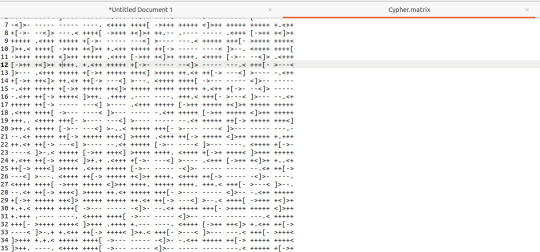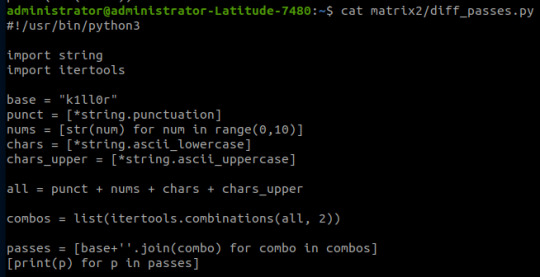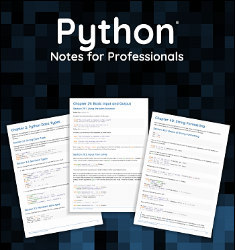#Itertools
Explore tagged Tumblr posts
Text
0 notes
Text
Matrix Breakout: 2 Morpheus
Hello everyone, it's been a while. :)

Haven't been posting much recently as I haven't really done anything noteworthy- I've just been working on methodologies for different types of penetration tests, nothing interesting enough to write about!
However, I have my methodologies largely covered now and so I'll have the time to do things again. There are a few things I want to look into, particularly binary exploit development and OS level security vulnerabilities, but as a bit of a breather I decided to root Morpheus from VulnHub.

It is rated as medium to hard, however I don't feel there's any real difficulty to it at all.
Initial Foothold
Run the standard nmap scans and 3 open ports will be discovered:
Port 22: SSH
Port 80: HTTP
Port 31337: Elite
I began with the web server listening at port 80.

The landing page is the only page offered- directory enumeration isn't possible as requests to pages just time out. However, there is the hint to "Follow the White Rabbit", along with an image of a rabbit on the page. Inspecting the image of the rabbit led to a hint in the image name- p0rt_31337.png. Would never have rooted this machine if I'd known how unrealistic and CTF-like it was. *sigh*

The above is the landing page of the web server listening at port 31337, along with the page's source code. There's a commented out paragraph with a base64 encoded string inside.
The string as it is cannot be decoded, however the part beyond the plus sign can be- it decodes to 'Cypher.matrix'.

This is a file on the web server at port 31337 and visiting it triggers a download. Open the file in a text editor and see this voodoo:

Upon seeing the ciphertext, I was immediately reminded of JSFuck. However, it seemed to include additional characters. It took me a little while of looking around before I came across this cipher identifier.

I'd never heard of Brainfuck, but I was confident this was going to be the in-use encryption cipher due to the similarity in name to JSFuck. So, I brainfucked the cipher and voila, plaintext. :P

Here, we are given a username and a majority of the password for accessing SSH apart from the last two character that were 'forgotten'.
I used this as an excuse to use some Python- it's been a while and it was a simple script to create. I used the itertools and string modules.

The script generates a password file with the base password 'k1ll0r' along with every possible 2-character combination appended. I simply piped the output into a text file and then ran hydra.

The password is eventually revealed to be 'k1ll0r7n'. Surely enough this grants access to SSH; we are put into an rbash shell with no other shells immediately available. It didn't take me long to discover how to bypass this- I searched 'rbash escape' and came across this helpful cheatsheet from PSJoshi. Surely enough, the first suggested command worked:

The t flag is used to force tty allocation, needed for programs that require user input. The "bash --noprofile" argument will cause bash to be run; it will be in the exec channel rather than the shell channel, thus the need to force tty allocation.
Privilege Escalation
With access to Bash commands now, it is revealed that we have sudo access to everything, making privilege escalation trivial- the same rbash shell is created, but this time bash is directly available.

Thoughts
I did enjoy working on Morpheus- the CTF element of it was fun, and I've never came across rbash before so that was new.
However, it certainly did not live up to the given rating of medium to hard. I'm honestly not sure why it was given such a high rating as the decoding and decryption elements are trivial to overcome if you have a foundational knowledge of hacking and there is alot of information on bypassing rbash.
It also wasn't realistic in any way, really, and the skills required are not going to be quite as relevant in real-world penetration testing (except from the decoding element!)
#brainfuck#decryption#decoding#base64#CTF#vulnhub#cybersecurity#hacking#rbash#matrix#morpheus#cypher
9 notes
·
View notes
Text
ive got a python data science midterm in 10 minutes and i dont know dick about numpy scipy pandas tibbles statistics linear algebra itertools matrices math in general sqlite
on a scale of 1 to 10 how fucked am i
2 notes
·
View notes
Text
Mastering Python: Tips and Best Practices for Efficient Coding
If you want to enhance your Python skills and become an expert developer, enrolling in the best Python training institute in Hyderabad is the perfect way to start. Python's simplicity and versatility make it a favorite among developers, but writing efficient and optimized code requires best practices and strategic techniques. Here are some tips to help you master Python coding.
1. Write Readable and Clean Code
Use meaningful variable names, follow the PEP 8 style guide, and break long functions into smaller, reusable ones.
def calculate_area(length, width):
return length * width
2. Use List Comprehensions
Code that uses list comprehensions is more concise and readable.
squares = [x**2 for x in range(10)]
3. Optimize Loops and Conditions
Use built-in functions like map(), filter(), and zip() instead of traditional loops for better performance.
numbers = [1, 2, 3, 4, 5]
squared = list(map(lambda x: x**2, numbers))
4. Utilize Generators for Large Data
Generators save memory by yielding values one at a time instead of storing them all at once.
def number_generator():
for i in range(1000):
yield i
5. Leverage Python’s Standard Library
Modules like collections, itertools, and functools provide powerful built-in functions that enhance efficiency.
from collections import Counter
count = Counter("mississippi")
6. Handle Exceptions Properly
Use try-except blocks to manage errors gracefully.
try:
result = 10 / 0
except ZeroDivisionError:
print("Cannot divide by zero!")
7. Use F-Strings for String Formatting
F-strings are more readable and efficient compared to older formatting methods.
name = "Alice"
print(f"Hello, {name}!")
Conclusion
By following these tips, you can write cleaner, faster, and more efficient Python code. To deepen your Python expertise, consider enrolling at Monopoly IT Solutions , the leading training institute in Hyderabad, and gain hands-on industry experience.
0 notes
Text

Learn how to use itertools to rotate your proxies when scraping data. Of course, you need a set of proxies. You can then use the itertools package in Python to cycle through them.
Source
0 notes
Text
Project 1: Counting Methods
For this assignment, you can just upload this document with your answers provided after each question below. If you worked with a partner, include their name Please print and sign the honor pledge somewhere on the document For this project, you should not use built-in functions or itertools. A student is registering for classes for next semester. The courses she can enroll in are calculus,…
0 notes
Text
🧠Imagine you're at an all-you-can-eat buffet 🍽️. Instead of filling your plate with everything at once, you take one item at a time, savoring it, and going back for more only when you're ready.
📌This is exactly how generators work in Python—they serve you data on-demand, making them super efficient and memory-friendly.
A generator is like a "lazy chef" in your code. Instead of preparing an entire feast (dataset) in one go, it cooks and serves one dish (data item) at a time, only when you ask for it. This is done using the yield keyword in Python.
E.g.,
def lazy_numbers():
for i in range(1, 4):
yield i # Produces one number at a time
gen = lazy_numbers()
print(next(gen)) # 1
print(next(gen)) # 2
print(next(gen)) # 3
🔍Notice how the generator "pauses" after each yield and resumes from where it left off.
Why Use Generators ❓
1️⃣ Memory Efficiency:
Instead of loading the entire dataset into memory (like a list), a generator produces data on-the-fly. E.g., Processing a 1GB file line by line without consuming 1GB of memory.
2️⃣ Faster Execution:
Generators produce data as needed, so you save time by not creating unnecessary items upfront.
3️⃣ Simpler Code:
They reduce boilerplate and make code cleaner when dealing with streams of data.
4️⃣ Infinite Data Streams:
You can generate an infinite sequence without worrying about memory constraints.
E.g., Scenarios like generating IDs, timestamps, or test data.
🚀Why Python Outshines Other Languages ❓
👉Ease of Use: Python's yield keyword is intuitive and concise. Languages like Java require more boilerplate code to achieve similar behavior.
👉Versatility: Generators integrate seamlessly with Python's rich ecosystem (e.g., itertools, comprehension-like syntax).
👉Community: Python’s focus on readability and simplicity makes generators accessible even to beginners.
Generators are your secret weapon for writing clean, efficient, and scalable code.
Have you used generators before? What’s your favorite use case? Let’s chat in the comments! 😊
0 notes
Text
Code
from itertools import permutations
a = "HHHHHHHHTT" b = "HHHHHHHHHT" c = "HHHHHHHHHH"
no length entered so default length
taken as 4(the length of string GeEK)
p = set(permutations(a)) k = set(permutations(b)) q = set(permutations(c))
Print the obtained permutations
for j in list(p): print(j) for i in list(k): print(i) for m in list(q): print(m)
Hcount = 17 Tcount = 12
Count occurrences of 'H' and 'T' in permutations of a
for perm in p: Hcount += perm.count('H') Tcount += perm.count('T')
Count occurrences of 'H' and 'T' in permutations of b
for perm in k: Hcount += perm.count('H') Tcount += perm.count('T')
Count occurrences of 'H' and 'T' in permutations of c
for perm in q: Hcount += perm.count('H') Tcount += perm.count('T') if Hcount > 20 or Tcount > 20: print("winner is either scoot or julian") print(Hcount) print(Tcount)
1 note
·
View note
Text
More Itertools
https://more-itertools.readthedocs.io/en/stable/
0 notes
Text
Project 1: Counting Methods
For this assignment, you can just upload this document with your answers provided after each question below. If you worked with a partner, include their name Please print and sign the honor pledge somewhere on the document For this project, you should not use built-in functions or itertools. A student is registering for classes for next semester. The courses she can enroll in are calculus,…

View On WordPress
0 notes
Text
Python, an interpreted, object-oriented language, excels in web development, software, and data analysis, emphasizing advanced concepts like Comprehensions, Lambda functions, Context Managers, Exception handling, Collections, Map, RegEx, Itertools, Magic methods, Closures, Inheritance, *args, Decorators, and Generators. Highlighting Context Managers' importance, the article urges learning through certification courses on platforms like Uncodemy, Udemy, Cetpa, and other reputable institutes for comprehensive Python training, showcasing the continuous exploration and growth opportunities in the Python world.
0 notes
Text


Python Hints and Tips for Professionals
Author: Peter Ranieri
Download Now
Python features a dynamic type system and automatic memory management. It supports multiple programming paradigms, including object-oriented, imperative, functional and procedural, and has a large and comprehensive standard library.
Python interpreters are available for many operating systems. CPython, the reference implementation of Python, is open source software and has a community-based development model, as do nearly all of Python's other implementations. Python and CPython are managed by the non-profit Python Software Foundation.
Python is a multi-paradigm programming language. Object-oriented programming and structured programming are fully supported, and many of its features support functional programming and aspect-oriented programming (including by metaprogramming and metaobjects (magic methods)). Many other paradigms are supported via extensions, including design by contract and logic programming.
Python uses dynamic typing, and a combination of reference counting and a cycle-detecting garbage collector for memory management. It also features dynamic name resolution (late binding), which binds method and variable names during program execution.
Python's design offers some support for functional programming in the Lisp tradition. It has filter(), map(), and reduce() functions; list comprehensions, dictionaries, and sets; and generator expressions. The standard library has two modules (itertools and functools) that implement functional tools borrowed from Haskell and Standard ML.
The language's core philosophy is summarized in the document The Zen of Python (PEP 20), which includes aphorisms such as:
Beautiful is better than ugly
Explicit is better than implicit
Simple is better than complex
Complex is better than complicated
Readability counts
Rather than having all of its functionality built into its core, Python was designed to be highly extensible. This compact modularity has made it particularly popular as a means of adding programmable interfaces to existing applications. Van Rossum's vision of a small core language with a large standard library and easily extensible interpreter stemmed from his frustrations with ABC, which espoused the opposite approach.
While offering choice in coding methodology, the Python philosophy rejects exuberant syntax (such as that of Perl) in favor of a simpler, less-cluttered grammar. As Alex Martelli put it: "To describe something as 'clever' is not considered a compliment in the Python culture." Python's philosophy rejects the Perl "there is more than one way to do it" approach to language design in favor of "there should be one—and preferably only one—obvious way to do it".
Python's developers strive to avoid premature optimization, and reject patches to non-critical parts of the CPython reference implementation that would offer marginal increases in speed at the cost of clarity. When speed is important, a Python programmer can move time-critical functions to extension modules written in languages such as C, or use PyPy, a just-in-time compiler. Cython is also available, which translates a Python script into C and makes direct C-level API calls into the Python interpreter.
Read more
An important goal of Python's developers is keeping it fun to use. This is reflected in the language's name — a tribute to the British comedy group Monty Python — and in occasionally playful approaches to tutorials and reference materials, such as examples that refer to spam and eggs (from a famous Monty Python sketch) instead of the standard foo and bar.
A common neologism in the Python community is pythonic, which can have a wide range of meanings related to program style. To say that code is pythonic is to say that it uses Python idioms well, that it is natural or shows fluency in the language, that it conforms with Python's minimalist philosophy and emphasis on readability. In contrast, code that is difficult to understand or reads like a rough transcription from another programming language is called unpythonic.
Read more
0 notes
Text
CS4221/CS5421 Project 2 Functional Dependencies and Normalisation Solution
In this project, we use Python 3.8. Use the Python le \project2.py” from Luminus les to answer the questions. You may add additional functions to help you answer the questions. However, do not change the name and the parameters of the given functions in the template le. You may import additional Python standard libraries (e.g itertools, copy) but not external libraries. For all questions, we use…
0 notes
Text
Itertools in Python
Itertools, as the name suggests, are a collection of modules that handles iterators. They are fast, memory efficient, and increase the maintainability of code and readability. In this article, MarsDevs presents you with the technical information on Itertools in Python, types of iterators, list of all functions in the itertools module.
Click here to know more: https://www.marsdevs.com/technical/itertools-in-python
0 notes
Text
For real tho, the way lambda expressions, expression trees and anonymous types combine provide for really nice and strongly-typed database queries, in particular, say
await db.Persons .Where(person => person.Age >= 18) .OrderBy(person => person.LastName) .Select(person => new { person.FirstName, person.LastName }) .Take(10) .ToListAsync();
translates straightforwardly into PostgreSQL's
SELECT FirstName, LastName FROM Persons WHERE Age >= 18 ORDER BY LastName LIMIT 10
while simultaneously looking pretty much identical to the C# code you would write for manipulating sequences of data in a functional style (also see: C++ ranges, Java streams or Python itertools). This is because a lambda expression can either be compiled into a C# method, or a tree of objects that represent its syntax tree, depending on what are we using it with. It's also more composable than SQL in that you can split the expression up into smaller subexpressions, and also allowing you to refactor a subexpression into a separate function.
LINQ my beloved
32 notes
·
View notes
Text
10 Built-In Python Modules Every Data Engineer Should Know
Unlock the power of Python with these 10 essential built-in modules every Data Engineer should master! From file management to complex data processing, these modules are your go-to tools for efficient, scalable, and powerful data engineering. Explore how os, sys, datetime, json, csv, sqlite3, re, collections, itertools, and math can simplify your workflow, optimize performance, and handle data…

View On WordPress
#classes on computers iscon-ambli road-ahmedabad#computer coaching centre near me#computer coding courses near me#Programming Courses in bopal Ahmedabad#TCCI computer coaching institute
0 notes